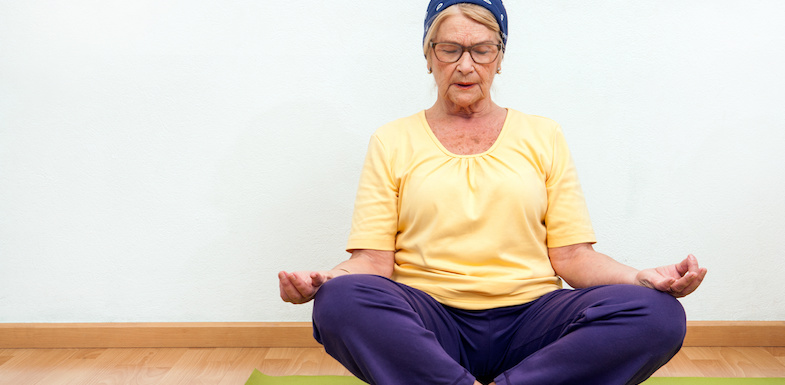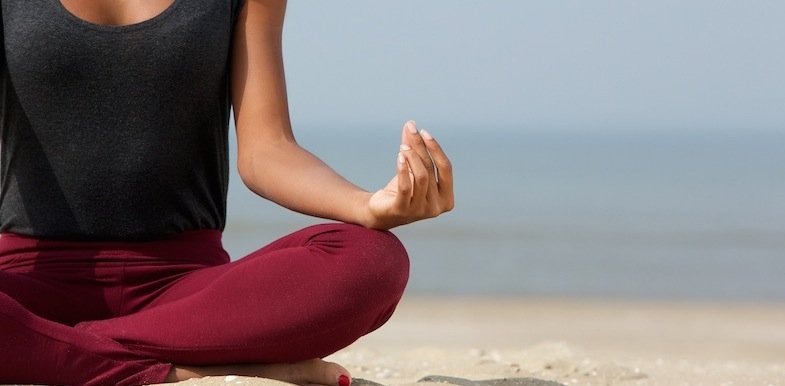The stress of modern life can wreak havoc on both the body and the mind. People may encounter work stress, money troubles, health issues, relationship problems, and any number of other situations that must be managed. Long-term, chronic stress takes a toll on inner peace, frequently leading to anxiety and depression. Many of the issues leading to stress fall outside of our control, exacerbating effects even more. All this tension affects mental health in many ways, both biological and emotional. We talk about the most common effects of stress in this post, as well as a seven-day program of stress management activities you can start next week to relieve stress at its source.
How can chronic stress lead to mental health issues?
Ongoing stress changes the very makeup of the brain and disrupts delicate chemical balances, potentially leading to mental health problems.
While the brain is comprised of both gray matter and white matter, people who experience chronic stress tend to have more white matter, researchers at the University of California, Berkeley found. This white matter is coated by a fatty substance called myelin that researchers believe impedes communication between brain cells and increases the likelihood that a person will develop anxiety or a mood disorder.
Chronic stress also increases the body’s levels of cortisol, a stress hormone, and lowers levels of key mood regulators including serotonin and dopamine. These changes can lead to depression. Researchers at New York’s Mount Sinai School of Medicine found chemicals related to stress inhibit functioning of the brain’s prefrontal cortex, making people more reactive and possibly resulting in anxiety or post-traumatic stress disorder.
Meanwhile, the link between stress and depression transcends biology.
Stress and self-care
People under stress are less likely to practice the very self-care activities that support happiness.
Stressed out people are less likely to exercise and sleep well, and more likely to smoke or drink. Although these behaviors may temporarily help a person feel better, they do little to manage stress or benefit health. If a person feels stress as a result of an unhappy event—a job loss, death in the family, or illness—that further increases the likelihood that a person will experience depression or other mental health issues.
Anxiety, a feeling of fear or worry characterized by an increased or irregular heartbeat, rapid breathing, sweating, or dizziness, is also closely linked to stress. Stress results from situations or problems that cause worry, and anxiety is unfortunately likely to follow. People who suffer from anxiety may worry excessively and find that angst difficult to control. In the worst-case scenarios, this can result in a full-blown panic attack, which is an intense bout of heightened anxiety.
How to better manage stress in 7 days
By now we all know the detrimental impacts of stress including inflammation, increased risks of cardiac disease and stroke, diminished quality of life, and even amplified pain. What if less stress was just seven days away?
Over the next week, if you follow this plan, you’ll experience an array of activities that when included in your daily life, will change your life. That may sound like a broad claim, but less stress and an improved sense of wellbeing come from the way we perceive and interact with the world, not the life circumstances that are handed to us. You have the power to shape the experience and quality of your life through your thoughts and habits.
Living with less stress, especially when you have chronic pain, is about prioritizing, choosing carefully and with intention. So are you ready for seven days to less stress? Here we go.
Day 1: Mindful mornings
Wake up with slowly and with presence. Your actions in the morning set the tone for your entire day.
When you open your eyes, immediately think of three things you’re grateful for. You may want to list them on paper, but just mentally listing them is fine, too. You may express gratitude for your eyes to see, your lungs for breathing in fresh air, or for the comfortable bed welcoming you into its covers each night.
Start the day in as gentle a way as possible. So that you remember to focus on gratitude first thing in the morning, consider writing yourself a love note and placing it on your nightstand before falling asleep the night before. Instead of waking up to a noisy alarm, set your phone to wake you up with a pleasant song, or even nature sounds like the ocean waves crashing on the shore or birds joyfully singing.
To get the body slowly moving, do a few gentle stretches before even getting out of bed. Roll the hands around, waking up the wrists, roll the feet around in both directions, and then maybe stretch the arms overhead.
When you feel ready, gently rise.
Day 2: Meditate
Meditation is one of the most profound things you can do for increased happiness, less stress, and even minimized pain.
The best time to meditate is in the morning. This is the time when the mind is quietest and it’s easiest to fall into stillness. Meditating first thing in the morning also ensures you find the time, which may become more difficult later in the day. However, an evening meditation may also be good to release the day and find peace before bedtime.
To meditate, find a comfortable seat somewhere quiet. Sit cross-legged on the floor if possible, perhaps on a pillow to elevate the hips and make sitting more comfortable. If sitting on the floor is difficult for you, it’s fine to sit in a chair, but make sure to sit up relatively straight.
Set a cell phone timer for the time you’d like to meditate. Starting with even three or five minutes is fine, but if possible sit for longer, maybe ten or 20 minutes. Sit and breathe, watching the breath enter the body and leave. When thoughts arise, don’t follow them, just come back to the breath.
You may occasionally notice that you somehow started following the trail of thoughts, but that’s okay. Simply notice, without judgment for yourself or your thoughts, how the mind is not in the present moment and gently refocus awareness on the breath.
If emotions arise, notice them too, breathing into them and asking yourself, “What is that?” Sometimes having a mantra is helpful to focus the mind. If you’d like to try that, try repeating a phrase that resonates like “I am peace” or “I am love.” Find more guidance on meditating with chronic pain here.
Day 3: Re-do the to-do list
Stress is often caused by the feeling that we don’t have enough of something to finish all we want to do. Maybe we feel we don’t have enough time or not enough energy.
And many times this is true. This is how people get burned out, by trying to do too much. But now that you’ve meditated and found a bit of stillness, maybe you’re starting to see that all this extraneous stuff begging to get your attention is just that—stuff—and most of it doesn’t really matter. Consider that you have enough time and energy for the things that really do matter.
One of the gifts of pain or any chronic health condition is that it forces you to prioritize. So today, instead of forcing yourself to do everything on your list, take things off the list.
Pick two, maybe three things that you have to do, and do them. Nothing else. If you have time left over, hang out in your backyard or walk to the park. Prioritize and leave the rest for tomorrow. The rest of the day, enjoy life.
Day 4: Exercise
Exercise is a powerful way to experience less stress and increase well-being. It may also reduce feelings of pain. The key to maintaining an exercise program is to pick something you really enjoy.
So today, be active for a minimum of 30 minutes. Maybe you’d like to walk briskly through the park, do an at-home yoga class, or take a bike ride. Get the heart pumping, sweat if at all possible, and feel your blood course through your veins. Feel alive.
Day 5: Visualization
Visualizations are a type of meditation that can be very healing for people with chronic pain or other types of health conditions. They’re very relaxing and may reduce some types of pain, according to the European Society of Cardiology. Visualizations also help calm anxiety.
Find a comfortable place and lie down. Before beginning the visualization, tell yourself that you will not fall asleep. For this visualization, picture a ball of glowing light. This light first shines at the feet, then moves up through the legs and abdomen. It lights up the arms, the heart center, throat, and head. Move this light slowly through the body, imagining what it looks like as it permeates every cell.
When you come to any painful areas, let the light linger for a little longer. Continue this practice for five or ten minutes, making sure to allow a final minute or so to visualize your entire body bathed in light.
Day 6: Gratitude
Gratitude is the foundation of a happier life filled with less stress. Earlier in this challenge, you greeted the day with thoughts of gratitude. Today is a gratitude-filled day. All day.
Start the morning by noting three things you’re grateful for. Then, as you move through the day, notice all the little areas of bounty that you might normally ignore. When you eat, pause for a moment to be thankful for the food on your plate. Think about all the things that had to happen for the food to arrive there.
Be grateful for water that nourished the crops, and the farmer, whose years of experience were integral for this harvest. Be grateful for the truck drivers who worked hard to drive that food to the grocery store. So many things had to fall into place for that sandwich or whatever it is you’re eating to land on your plate. Express gratitude and appreciate the beautiful orchestra of life that’s continually unfolding.
Building these pauses of gratitude and mindfulness into your day will dramatically reduce stress and improve the feeling that you are well taken care of. Because you are.
Maintain this practice all day and make sure to end the evening with a brief review of the one or two things you’re most grateful for that day.
Day 7: Spend time in nature
Walk outside, feel the sunshine on your face, the wind in your hair, walk barefoot, and smell the breeze. Reconnecting to the rhythms of life is a powerful antidote to stress, but modern life takes place more inside climate-controlled buildings than it does outside in beautiful nature.
Spend at least 30 minutes outside, sitting or walking, and appreciate the flowers, the trees, and the birds. Appreciate that you are just a tiny part in the miracle of life.

